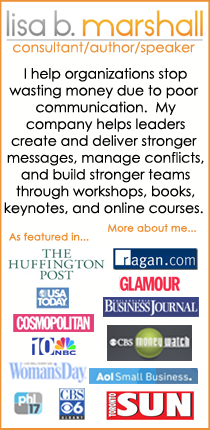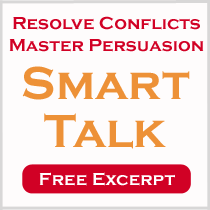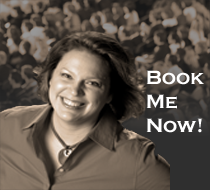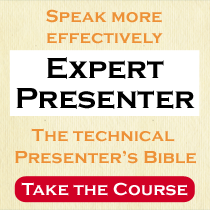Audience Analysis to Connect & Resonate
In my experience, when presentations (or training sessions) go horribly wrong, the root cause almost always boils down to one thing:
The presentation didn’t resonate with the audience because the material wasn’t specific enough for that particular audience.
Unless you take steps to adapt the material for your participants, you’re guaranteed to have a problem.
So what can you do? How do you reach your audience and connect with them?
First listen to the “Connecting the Dots…” episode of my The Public Speaker Show. It only takes six minutes, go ahead, I’ll wait. Then create a practice audience analysis slide.
To do that, you’ll want to find out as much as you can so that you can adapt a presentation to the needs, interests, and background of your listeners. It may seem simple and obvious, but it deserves extra attention. It’ the most important thing you can do for any presentation. The more you understand about the participants, their work environment, and the stresses they face, the more successful you’ll be at making a solid connection. I can’t emphasize that enough.
I create a slide. It’s a hidden slide, meaning I’m the only one who ever sees it. I create it to paint a picture of the people involved. After each conversation, I fill in details and it helps me to keep track of what I still need to find out. When I’m editing the presentation material, this slide helps me keep focused on the importance of connecting to THIS particular audience.
Specifically, the slide outlines the responses to the following questions: Who are they? What do they already know? What do they want to know? How might they resist? Finally, and most importantly, what should they say, think, or do differently as a result of hearing me speak? Again, the slide isn’t projected; I just like to include it in the slide set to keep me focused.
Recently, I did a public speaking program for architects, preservationists, and city planners. Here’s the audience analysis slide that I created for that presentation.
Again, this not ALL of the information I gathered. This just the summary of the details that I collected in the planning conversation survey that I use. I really find the creation o f this audience analysis slide useful.
I the comments let me know if you are using a tool like this and how it helps you!











There is 1 comment .